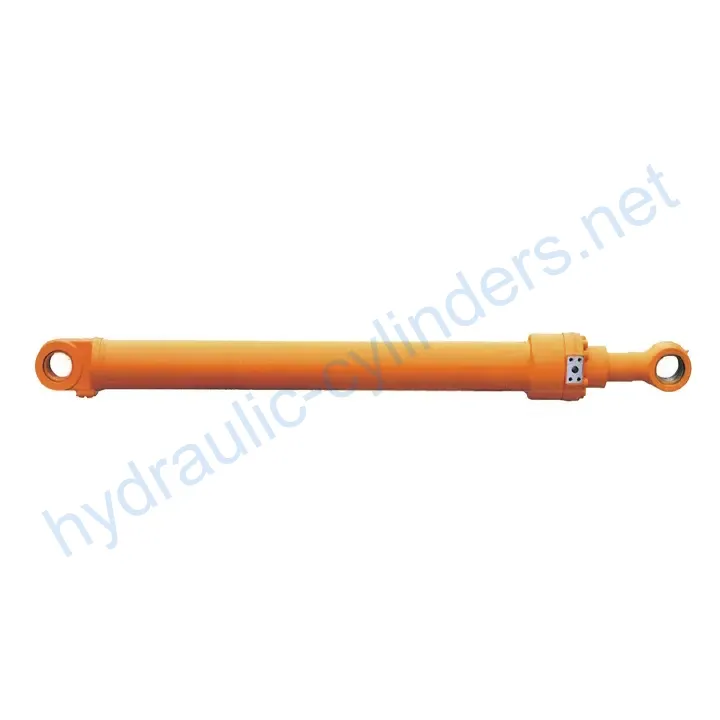Arm CylinderFor Zoomlion Middle Excavator ZE210E
Introduction
An arm cylinder is a specially designed hydraulic cylinder that provides linear motion and power to the arm of various machinery, such as excavators, cranes, and robotic arms. The arm cylinder plays a crucial role in hydraulic systems, enabling the efficient movement and control of additional tools or attachments. These cylinders not only ensure smooth motion but also withstand heavy loads, ensuring the efficient operation and reliability of the machinery under various working conditions.
Definition and Explanation
An arm cylinder is a hydraulic cylinder specially designed to provide linear motion and power to the arm of various machinery. It is commonly used in excavators, cranes, and robotic arms, among others. The arm cylinder plays a critical role in hydraulic systems, allowing for effective movement and control of additional tools or attachments. These cylinders are known for their smooth motion and ability to handle heavy loads, ensuring the efficiency and reliability of the machinery in different operating conditions.
Features of Arm CylinderFor Zoomlion Middle Excavator ZE210E
- High Efficiency Transmission: The arm cylinder provides powerful linear motion and force, ensuring high-performance operation of the machinery arm in various applications.
- Precise Control: Through the hydraulic system, the arm cylinder enables precise motion control, making the operation of additional tools more flexible and accurate.
- Durability: Arm cylinders are typically manufactured using high-strength materials, making them highly resistant to wear and corrosion, suitable for long-term use in harsh environments.
- Multi-functional Adaptability: These cylinders can be widely applied in various mechanical equipment, including excavators, cranes, and robotic arms, adapting to different job requirements.
- Easy Maintenance: The design of arm cylinders takes into consideration ease of maintenance and replacement, making regular inspections and maintenance convenient and reducing equipment downtime.
Applications of Arm CylinderFor Zoomlion Middle Excavator ZE210E
1. Construction Engineering
In excavators and cranes, arm cylinders are used to control the movements of buckets or booms for earthwork, material handling, and structural installation.
2. Manufacturing Industry
In automated production lines, arm cylinders are used for the motion of robotic arms in processes such as assembly, welding, and material handling, improving production efficiency and precision.
3. Agricultural Machinery
In agricultural machinery like harvesters and seeders, arm cylinders control the movements of operating arms for tasks like planting, fertilizing, and harvesting.
4. Mining
In mining equipment, arm cylinders are used to control the arm movements of mining machinery for ore extraction and transportation.
5. Logistics and Transportation
In forklifts and handling robots, arm cylinders control the lifting and movement of forks, enabling material handling and stacking.
Design Considerations and Selection Criteria
1. Load-Bearing Capacity
The arm cylinder should be designed to handle the specified load-bearing capacity to ensure safe and efficient operation.
2. Sealing
Various sealing elements, such as piston seals and rod seals, should be used in the arm cylinder design. These seals should be made of wear-resistant materials, such as polyurethane and nitrile rubber, to ensure effective sealing performance.
3. Durability
The arm cylinder’s body and threaded end should undergo precise processing to enhance wear resistance. Regular lubrication with suitable hydraulic oil is required to ensure smooth operation and longevity.
4. Safety
Arm cylinders should be designed with safety features such as pressure relief valves and overload protection mechanisms to prevent accidents and ensure operator safety.
5. Maintenance
Easy accessibility for maintenance and replacement of components should be considered in the design of arm cylinders to minimize downtime and facilitate regular inspections.
Regular Inspection and Preventive Maintenance Measures
Regular inspection and preventive maintenance are essential for the optimal performance and longevity of the arm cylinder. The following measures should be implemented:
- Inspect the arm cylinder for any signs of leakage, wear, or damage.
- Check the seals and replace them if necessary.
- Ensure proper lubrication of the arm cylinder with the recommended hydraulic oil.
- Tighten any loose connections or bolts.
- Verify the pressure and temperature readings to ensure they are within the specified range.
Installation Guide for Arm CylinderFor Zoomlion Middle Excavator ZE210E
Follow these steps to correctly install the arm cylinder:
- Ensure that the machinery is powered off and properly supported.
- Remove the old arm cylinder, if applicable, by disconnecting the hydraulic lines and unbolting the cylinder from its mounting points.
- Inspect the new arm cylinder for any damage or defects before installation.
- Position the new arm cylinder in place and secure it with the provided bolts.
- Reconnect the hydraulic lines, ensuring they are properly sealed.
- Test the arm cylinder for proper operation and check for any leaks.
Safety Considerations and Environmental Factors
When using arm cylinders, it is crucial to prioritize safety measures to prevent accidents and ensure operator well-being. Safety precautions include:
- Providing proper training to operators on arm cylinder usage and safety protocols.
- Regularly inspecting and maintaining the arm cylinder to identify potential hazards.
- Using appropriate personal protective equipment (PPE) when handling or working near the arm cylinder.
- Adhering to all relevant safety regulations and guidelines.
Fault Diagnosis and Common Issues
Common issues that may arise with arm cylinders include:
- Leakage of hydraulic fluid.
- Irregular or jerky motion of the arm.
- Inadequate lifting or carrying capacity.
To address these issues, consider the following troubleshooting and solutions:
- Inspect all hydraulic connections for loose fittings or damaged seals and tighten or replace them as necessary.
- Check the hydraulic fluid level and replenish if required.
- Verify that the hydraulic system pressure is within the recommended range.
- If the problem persists, consult a professional for further inspection and repair.
About Our Company
We are a professional manufacturer of replacement hydraulic cylinders and offer a wide range of products. We have become one of the leading manufacturers and wholesale distributors of hydraulic cylinders in the domestic and international markets

